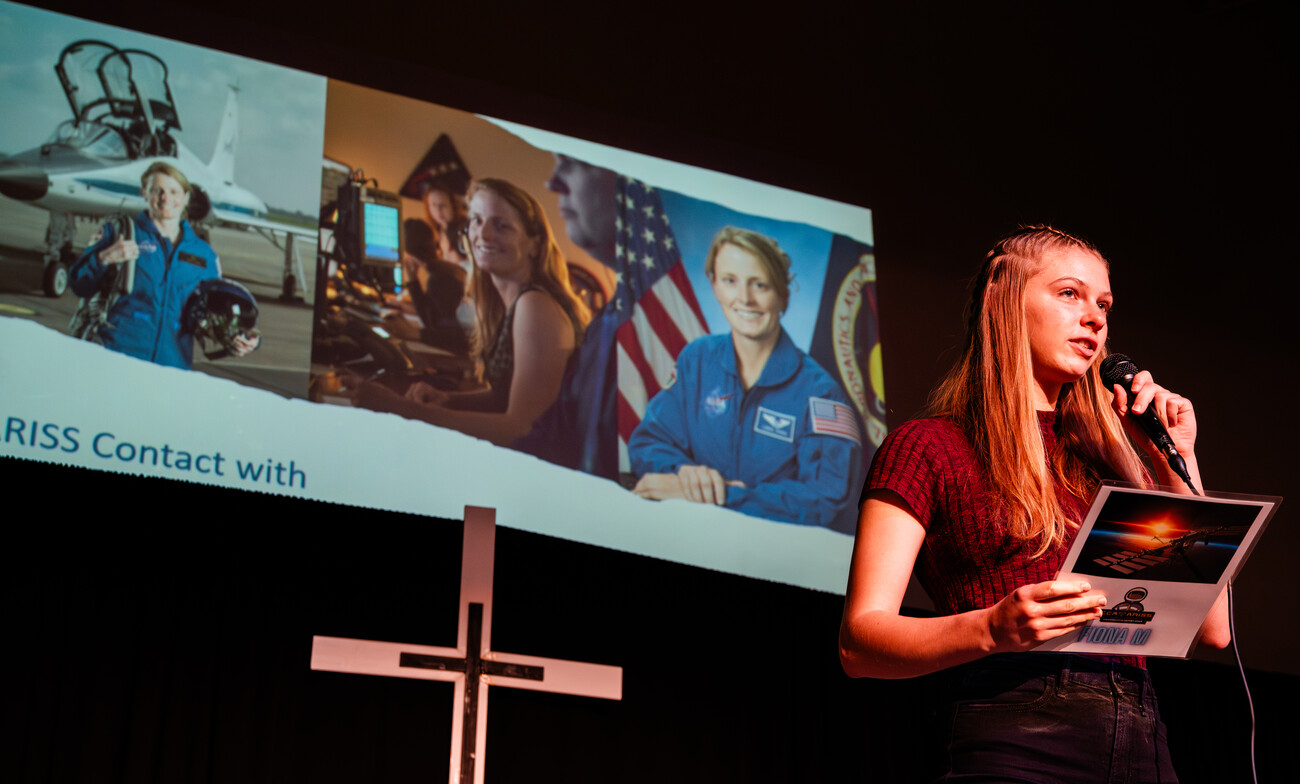PEABODY — The entire student body of Covenant Christian Academy welcomed a very special guest speaker Friday morning. Astronaut Loral O’Hara answered the questions of curious learners, approximately 254 miles above the Earth’s surface aboard the International Space Station.
The communication was conducted through amateur radio, also known as ham radio, as part of the Amateur Radio on the International Space Station program. A team of engineers from Bruker BioSpin facilitated the connection between CCA’s small gym and the vast reaches of outer space.
Senior Radio Frequency Engineer Joseph Grifoni explained the basic functions of the radio that made contact between O’Hara and the students possible.
“ISS gives us a little 5-watt signal, a nightlight is 5 watts,” Grifoni said. “We’re running 100 and we’re also beaming it so that we really get up there, because we have all the power in the world down here.”
Grifoni also added that the audio signal is conducted through frequency modulation, more commonly known as FM radio. He expressed his wish to inspire the younger generation with this technology, much like he was inspired by the generation before him.
“Behind all of these eager young faces is a strong mind, but they can’t advance technology and science without standing on the shoulders of the generation before them,” Grifoni said.
After an introduction that included a greeting from ARISS Liaison Fred Kemmerer, a recap of what CCA students have learned about space and radio in anticipation of the event, and ham-radio trivia, contact was made. 10 students posed their prepared questions to O’Hara.
One student was curious about the most amazing sight O’Hara has witnessed from space.
“Two of my favorite sights so far were Cairo, Egypt at night,” O’Hara said. “It was just this beautiful string of light down the coastline. And also some of the coastline of South America and Chile where I worked for a while, so it was familiar to me.”
Senior Fiona Moll asked O’Hara if living on the ISS has changed her perspective on life overall.
“It has helped me learn to be adaptable and flexible,” O’Hara answered. “Every day our plans are changing, our schedules are changing, and we have to be able to adapt.”
Moll explained why she was so eager to get O’Hara’s perspective on that specific question.
“Living out in space is a completely different perspective than living on Earth,” Moll said. “It’s a really different opportunity to be able to see Earth from a different perspective and think about the way we live our lives differently than before.”
Jennifer O’Riorden, CCA’s STEM coordinator, was the driving force behind making this opportunity a reality for her students. She explained that more than 1,000 schools apply for this ARISS program and only a small number are chosen. She described why she felt CCA was a deserving recipient of what this experience has to offer.
“I think they look for schools that have a demographic where kids might not usually get exposure to this,” O’Riorden said. “Even though we’re a private school, we actually have a lot of kids who receive financial aid and things like that. Also, through our student population we reach over 50 communities in Massachusetts. So that’s a lot of communities that are learning now about ham radio that probably never knew about it before.”

